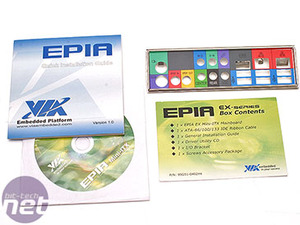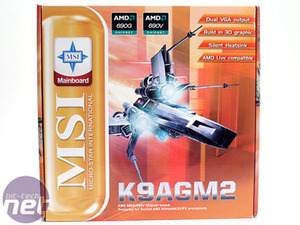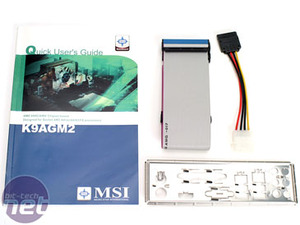HTPC Face Off: VIA EPIA to the rescue?
There's no doubt that it's been a long while since we reviewed an EPIA board. VIA has gone from strength to strength with its mini-ITX line of motherboards that have arguably owned the consumer industry in its five years of existence. Despite the patent battles between VIA and the respective blue behemoth (Intel), EPIA boards are still arriving in all shapes and sizes.Said big blue company is putting the squeeze on poor VIA, in more ways than one, with a push to use more mini-ITX motherboards in its line up. It might have a far superior R&D budget but it doesn't have the brand awareness and few steps in front that VIA already has, as well as the ultra low power components that are ever so popular.
As much as we're all for efficient computation here at bit-tech, at what point does it actually impede on what you want to do with it? Traditionally VIA CPUs have been tarred with a very poor performance brush, however now VIA has its new C7 CPU, which comes on a much faster bus and also has an improved clock speed too. Is this enough to keep up with today’s YouTube loving, High-Definition watching, iPhone obsessed generation though?
After much thought, a few arguments and an extreme Guitar Hero play off complete with power slides, we decided to pit the EPIA EX motherboard, against a home theatre PC (HTPC) system you could actually buy for around the same price. We came up with an AMD 690G system, based on the MSI K9AGM2 motherboard and one of AMD's new low power Athlon X2 BE-2350 CPUs. It's a slightly bigger form factor at micro-ATX and it has a smaller variety of features, but it still comes with HDMI and supports protected content needed for much of the "next generation" High-Definition media.
So is the EPIA EX 15000G enough to fit the bill saving us from needing an overpowered AMD beast, or is it there a bare minimum you should strive for?

VIA EPIA EX 15000G
- VIA C7 1.5GHz processor
- VIA CX700M2 chipset
- Up to 1GB DDR2 533MHz memory
- Integrated VIA UniChrome Pro II AGP graphics with MPEG-2/4 and WMV9 video decoding acceleration
- One PCI Slot
- One UltraDMA 133/100/66/33 connector
- Two SATA connectors
- One VIA VT6107 10/100 Mbps fast ethernet controller
- VIA VT1708A High Definition eight-channel audio codec
- VIA VT1625M HDTV Encoder
- VIA VT6307S IEEE 1394 Firewire controller
- LVDS connector to support 1-CH LVDS panel
- CCIR656/601 video input and SMBUS
- Mini-ITX form factor, 17 cm x 17 cm
Box Contents
- One IDE cable
- A quick installation guide
- A driver utility CD
- Metal I/O bracket
- Case screws
The EPIA quick installation guide doesn’t even reference the board in the box, it’s a generic guide and some of the contents don’t even correlate directly to the motherboard's connections. There is no manual in the box either, which would be particularly important in this case because of the unique features and certain confusing BIOS options. In all we feel it falls far short of where the bar is.
MSI K9AGM2
- AMD Athlon 64 X2, Athlon 64, Athlon FX and Sempron in socket AM2 that support a HyperTransport speed up to 1GHz (2000MT/s)
- AMD 690G and SB600 Chipset
- Supports up to 4GB of dual DDR2 400/533/667/800 DIMMs (240-pin / 1.8V)
- One PCI Express x16 slot
- One PCI Express x1 slot
- Two PCI slots
- One IDE port supporting Ultra DMA 66/100/133 mode
- Four SATA 3Gbps ports supporting RAID 0, 1 and 0+1 modes
- Realtek ALC888 providing eight-channel High-Definition audio with jack sensing
- Supports 10/100/1000 Gigabit Ethernet over PCI-Express by Realtek 8111B
- IEEE1394a Firewire integrated by VIA VT6308
- One optional TV-out connector
- 24.4cm(L) x 21.5cm(W) Micro-ATX form factor
Box Contents
- One red SATA cable
- A driver/utility CD
- One Molex to SATA power adapter
- One IDE cable
- Metal I/O bracket
- User manual

MSI MPG Velox 100R Chassis Review
October 14 2021 | 15:04













Want to comment? Please log in.